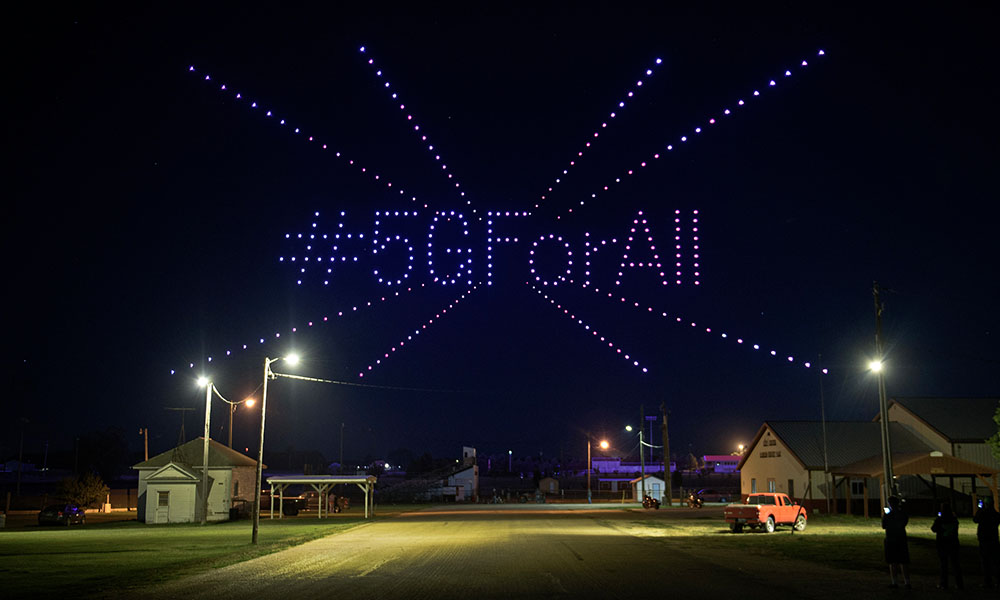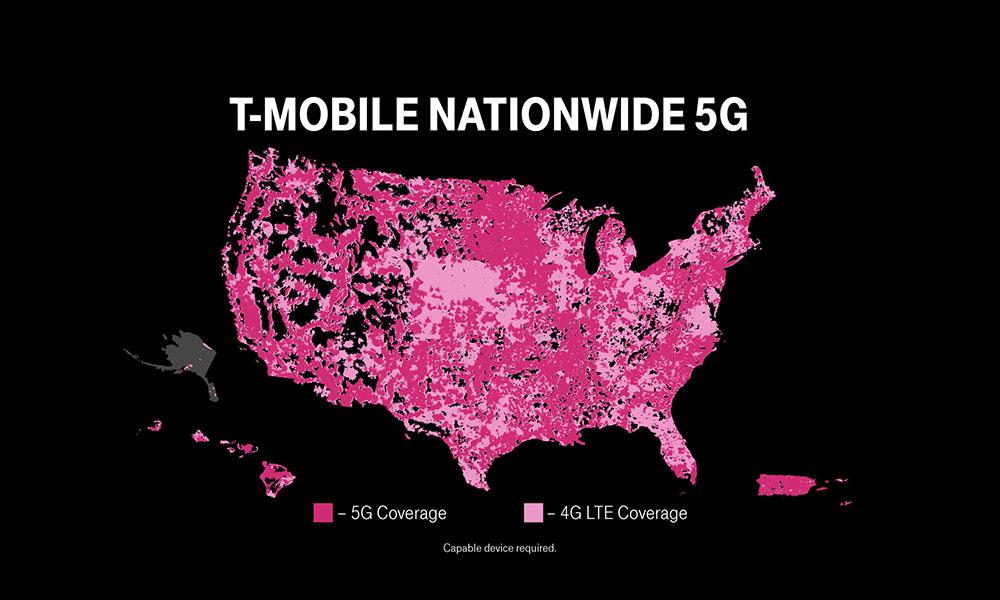T-Mobile Just Launched the First Nationwide ‘Standalone’ 5G Network in the U.S. (Here’s What That Means)
 Credit: T-Mobile
Credit: T-Mobile
Toggle Dark Mode
There’s no doubt that 5G rollouts are happening quite aggressively across the U.S. as Apple prepares to launch its first-ever 5G iPhone, but what’s more interesting is that each major carrier has a very different approach to how it’s planning to deploy the new wireless technology.
For example, Verizon has focused exclusively on the ultra-fast mmWave, concentrated only in major cities, leaving those in more rural and even suburban areas stuck on its current 4G LTE network. This lets Verizon boast of very fast speeds, but only for relatively small segments of the U.S. population who are fortunate enough to live near its mmWave transceivers.
On the other hand, T-Mobile has taken the diametrically opposite approach, eschewing the faster but much shorter-range mmWave technology entirely in favour of spreading out 5G coverage across the entire U.S., which it’s been able to do thanks to its much longer-range 600MHz spectrum.
In fact, T-Mobile was the first to have a (mostly) nationwide 5G network back in December, and as of June it was able to truly say that it offered coverage in all 50 states as it rolled out 5G coverage into Alaska.
‘Standalone’ 5G?
On the basis of T-Mobile’s previous announcements, you may find T-Mobile’s latest announcement of “the world’s first nationwide standalone 5G network” to be somewhat bewildering.
After all, didn’t T-Mobile already have a nationwide 5G network?
Well, yes, it definitely did; T-Mobile wasn’t lying when it said that it has coverage in all 50 states, but that doesn’t mean that every single individual in the U.S. could actually access 5G service.
The reality is that the original network offered 5G service in 5,000 cities and towns across the U.S. back in December, expanding that to around 6,000 by the time it added Alaska back in June.
That’s over 95 percent of the people in America, but of course, that also means that there’s still a ways to go before T-Mobile reaches the 99 percent that it has promised to deliver under the terms of its merger with Sprint, and this latest announcement is another big step in that direction.
You see, up until now, T-Mobile has just been bolting 5G technology onto its existing 4G LTE network. effectively tying its 5G footprint to its existing 4G coverage, while also saddling it with some of the other limitations of the LTE technology.
In simple terms, signals from 5G deployed in this manner could only go as far as the LTE signals could go.
However, with this latest development, T-Mobile has removed the shackles of the legacy 4G technology, with a completely independent and standalone 5G network that’s allowed it to not only significantly expand its footprint but also improve latency for even better network performance in those areas that are already covered.
What This Means
In practical terms, this represents an expansion of T-Mobile’s 5G coverage by 30 percent. Now that the 600MHz 5G frequencies no longer depend on compatibility with 4G LTE technology, they can offer hundreds of square miles of additional coverage from a single tower, and even penetrate even deeper into buildings.
This brings the total of T-Mobile’s coverage area to 1.3 million square miles, covering over 250 million people in over 7,500 cities and towns across the U.S.
Further, by decoupling the 5G from the older core network, T-Mobile notes that its engineers have already seen improvements in latency of up to 40 percent over what the non-standalone 5G network offered.
This means much faster network response times, which are often far more critical than raw speed where mobile devices are concerned — it’s basically the difference between how long it takes a web page to start loading versus how long it takes to actually load, and more often than not it’s the latency that frustrates smartphone users on mobile networks more than the lack of actual speed.
With this latest development, T-Mobile now says that its 5G network is twice as large at AT&T’s, and more than 10,000 times bigger than Verizon’s, which isn’t all that surprising, considering that Verizon hasn’t deployed 5G outside of major U.S. cities, and even AT&T has been taking a more gradual approach, mixing ultra-fast mmWave in major urban centres with a more modest sub-6GHz rollout for suburban and rural areas.







